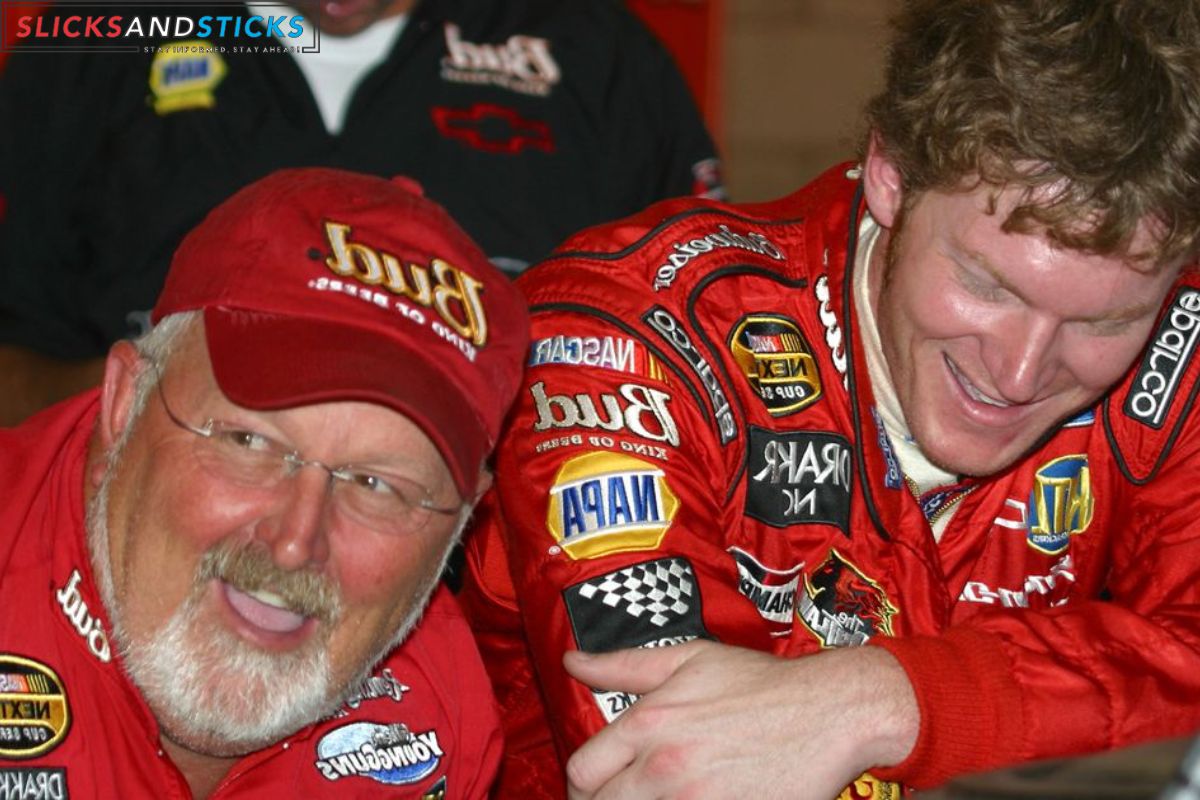Evolution of NASCAR Cars: Gone are the days when teams had the freedom to fine-tune their machines, boosting drivers’ performance. The dawn of the next-gen cars has shifted the NASCAR landscape significantly, emphasizing fairness in competition over customization.
With NASCAR striving for a level playing field, the Gen-7, known as the next-gen cars, has standardized components, ensuring every car on the track is identical. This eliminates the possibility of one driver gaining an edge purely based on speed. Former driver Dale Earnhardt Jr and others have weighed in on this shift.
In the past, teams like those of Tony Eury and Tony Eury Sr had more flexibility to craft cars, allowing for a personal touch. Drivers like Kenny Wallace reminisce fondly about the bygone era when cars were tailored to suit specific needs.
“I appreciated the era where teams could customize cars,” said Wallace, referencing Formula 1’s unique manufacturer rivalries. However, Dale Earnhardt Jr holds a distinct perspective on this matter.
While Junior appreciated the ability to innovate in the shop, he acknowledged the trade-offs involved. Creating an advantage required hiring top-tier talent, which came with hefty costs and constant battles to retain skilled personnel.
“The new next-gen cars bring peace of mind,” Dale Jr expressed. He praised the cars’ potential to level the playing field while also acknowledging why NASCAR moved towards this design.

NASCAR faced harsh realities with the closure of Furniture Row Racing post their 2017 championship win. Sustainability concerns, compounded by pandemic-induced challenges, spurred NASCAR to introduce the next-gen cars, providing relief to manufacturers.
NASCAR President Steve Phelps highlighted the cost benefits and increased competitiveness these cars offer. Moreover, the cars’ aesthetics now allow manufacturers to showcase their distinct styles symmetrically, a departure from previous chassis-skewed designs.
ALSO READ: Steve Letarte Emmy-Worthy Analysis: Decoding NASCAR’s Next-Gen Technology
Our Reader’s Queries
What are the different generations of Nascar cars?
NASCAR has seen four generations of cars since its inception. The first generation, from 1948 to 1966, featured cars that were almost identical to their on-street counterparts. The second generation, from 1967 to 1980, was designed to handle the new superspeedways. The third generation, from 1981 to 1990, saw advancements in technology and safety features. The fourth generation, from 1991 to 2006, brought about even more improvements in aerodynamics and engine power. Each generation has left its mark on the sport, shaping the way we see NASCAR today.
When did NASCAR change cars?
NASCAR’s Next Gen car will make its debut in the 2022 season, replacing the Gen 6 car and chassis that were used from 2013 to 2021 in the Cup Series. This marks a significant change for the sport, as the Next Gen car promises to bring new technology and advancements to the track. Fans and drivers alike are eagerly anticipating the start of the season to see how the new car will perform and what it will mean for the future of NASCAR.
What cars were used in NASCAR in the 70’s?
The AMC Matador (1971-1978), Dodge Charger (1967-1977), Plymouth Belvedere (1967), Plymouth Road Runner (1968-1980), and Plymouth Superbird (1970) are all iconic models that have left a lasting impression on the automotive industry. These vehicles have stood the test of time and continue to be admired by car enthusiasts around the world. Each model has its own unique features and characteristics that make it stand out from the rest. From the sleek design of the Charger to the powerful engine of the Superbird, these cars are a testament to the innovation and creativity of their respective manufacturers.
Why is Dodge not in NASCAR?
Following their championship win with Penske Racing and driver Brad Keselowski in 2012, the automaker withdrew from the sport. This decision was prompted by their refusal to offer Penske Racing a multi-year deal, leading the team to switch to Ford. Despite their departure, Keselowski continued to celebrate victories in the No. car.
